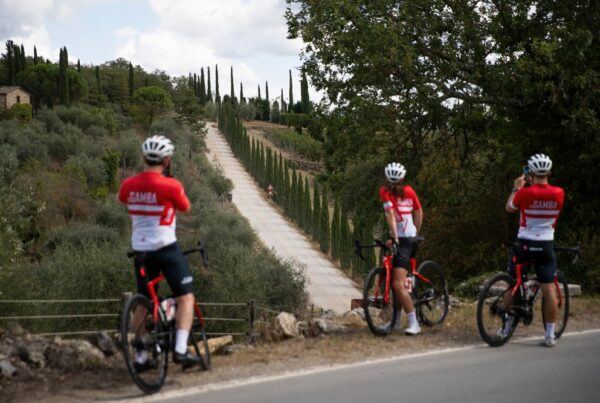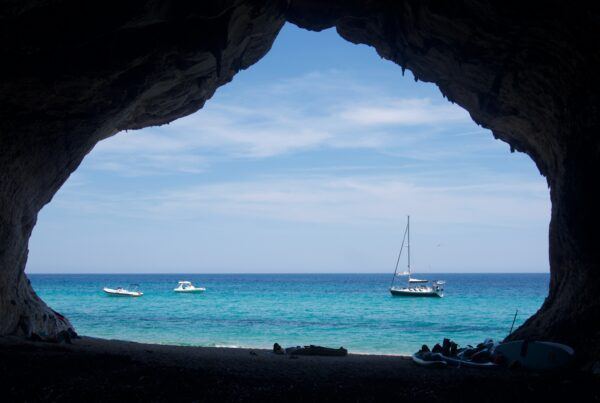It was a brilliant blue afternoon, with cool ocean breezes from the west. Every cycling expedition begins with a “shakeout” day to see what’s working and what’s not — with the riders as much as the rides. Our pace was casual and chatty. We discussed a procession of gaily painted boats adorned with religious statuary. When a scooter whined past, one of the guides, a recently retired pro named Manuel Cardoso, jumped into its slipstream — “motor pacing,” as racers call it. We finished with a climb to our hotel, the Pousada Castelo Alcácer do Sal, located in a former convent in Alcácer do Sal, a town that was central to the salt trade during the Roman Empire.
 On the second day, we turned inland, away from the marshes and pine forests of the coast. Cork oaks dotted the hillsides, floating like delicate green clouds above the brown grasslands. As I settled into the rhythm of the ride, I found that the greatest pleasure, even more than the scenery and the camaraderie, was being freed, thanks to the support team, from all worry. In the morning I simply had to report for my daily briefing with Cardoso. There sat my bike, tuned and polished, with fresh water bottles and a Garmin computer loaded with the day’s route map. Nearby was a spread of rice cakes, energy bars, and the delicious Portuguese custard tarts known as pastéis de nata. If I flatted or got thirsty on the road, the support vehicle would whisk up with a fresh wheel or bottle. At the end of the day, I handed my bike to the mechanics, put my sweaty clothes in a mesh bag on the door handle of my hotel room, and reported to the soigneurs for a massage.
On the second day, we turned inland, away from the marshes and pine forests of the coast. Cork oaks dotted the hillsides, floating like delicate green clouds above the brown grasslands. As I settled into the rhythm of the ride, I found that the greatest pleasure, even more than the scenery and the camaraderie, was being freed, thanks to the support team, from all worry. In the morning I simply had to report for my daily briefing with Cardoso. There sat my bike, tuned and polished, with fresh water bottles and a Garmin computer loaded with the day’s route map. Nearby was a spread of rice cakes, energy bars, and the delicious Portuguese custard tarts known as pastéis de nata. If I flatted or got thirsty on the road, the support vehicle would whisk up with a fresh wheel or bottle. At the end of the day, I handed my bike to the mechanics, put my sweaty clothes in a mesh bag on the door handle of my hotel room, and reported to the soigneurs for a massage.
Soigneur, a French word meaning roughly “one who provides care,” has special resonance in the cycling world. “The mechanic takes care of the bicycle,” as João Correia explained, “and the soigneur takes care of the rider.” One of ours, José, had the thoughtful mien and close-cropped beard of a noble from a 17th-century Portuguese portrait. He worked my savaged legs with the intensity of a monk.
The true heat began on the third day. The chatter subsided, the pace slowed, and we were all content to let the pros up front take the brunt of the wind. Had I not been so focused on reaching the Torre de Palma without passing out, I might have wondered how my wife and daughter were getting on. I needn’t have worried. When I finally did arrive, I found them emerging from a swim, having already taken a cooking class with the hotel chef.
Torre de Palma, which opened in 2014 on a 13th-century herdade, or estate, consists of stark white buildings, old and new, surrounded by agricultural plains. At sunset, we joined the owner, Paulo Barradas Rebelo, for vinho verde atop the property’s eponymous tower. It had a vaguely Moorish cupola and notched openings around the top, through which I imagined medieval archers flexing their bows. “The families liked to show their power with symbolic gestures,” Rebelo said. “From here they could keep an eye on the workers.”
After Rebelo pointed out the Roman ruins in the distance, my daughter begged to go for a visit. We borrowed cruiser bikes from the hotel and pedaled along a gravel road to the gates, only to find them locked. Then we spotted a small opening, and in a moment of parental-role-model failure — I blame the heat — I decided we should sneak in for a quick look at the ancient frescoes and olive-oil presses.
To continue reading, click here.
–
This is an excerpt from Tom Vanderbilt’s recent feature on inGamba for Travel + Leisure Magazine.

















